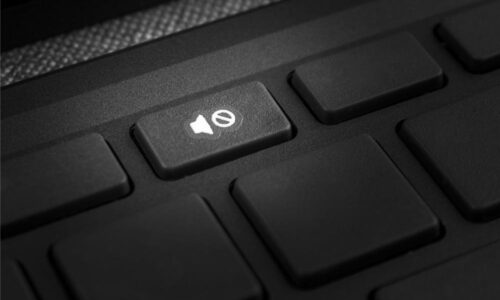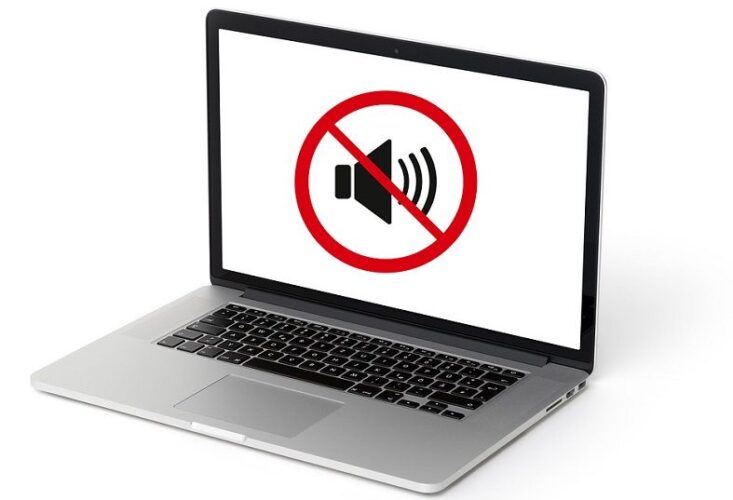Giveaway Best – Can’t figure out what’s wrong with your laptop’s audio? Here’s how to fix laptop has no sound problems.
There’s nothing like cranking up some tunes to keep your momentum going during the workday. But if your laptop’s sound isn’t working, it can really kill your groove. It can be hard to figure out the issue; is it your headphones, or could there be something wrong inside your computer? Here’s how to troubleshoot your PC if you aren’t getting any sound.
Check Your Volume Levels
This seems obvious, but I can’t tell you how many times I’ve accidentally muted my volume, only to slap my forehead in exasperation later. Click the speaker icon in the bottom-right corner of the Windows 10 taskbar and make sure your volume is unmuted and turned up.
In Windows 11, the Wi-Fi, volume, and battery settings are found via a single button on the taskbar. Click it, select the volume bar, and drag it to the right to turn up the sound; when you let go, you should hear a “ding.”
Mac users running macOS Big Sur or later will find sound controls within the Control Center icon in the top-right corner of the screen. Drag the Sound bar to the right to make things louder. For devices running an older OS, there will be an individual sound button instead.
Unmute Your Apps
If you hear a ding when the laptop volume is increased but still get no sound, the app you’re trying to use may be muted instead. Ensure the music app or video player—or any other app you’re using—is unmuted and turned up.
The same goes for YouTube and other in-browser players—it’s easy to mute them accidentally, which can be frustrating to diagnose later. Chrome users, for instance, can click the music note icon in the browser’s menu to control audio playing from any tab.

Try Some Headphones
If you’re having trouble with your laptop’s built-in speakers, try connecting headphones or a set of external speakers. If the sound works through them, you might have a hardware problem with the laptop’s built-in speakers.
You can also try connecting a pair of USB headphones (like a USB gaming headset) if you have something like that handy. These can bypass the default audio driver and indicate where the problem might lie, so it’s worth a shot.
Change Your Audio Device
It’s possible your speakers are working just fine, but your computer is directing sound to the wrong output device—this is especially common if you’ve plugged in a USB audio device or an external HDMI monitor that doesn’t have speakers.
In Windows 10, right-click the speaker icon in the taskbar and choose Sounds. Select the Playback tab and choose the device you want to use. If you don’t see it, try right-clicking and checking Show Disabled Devices. Select the output device you want and click the Set Default button.
In Windows 11, go to Settings > System > Sound > All sound devices and make sure the correct output device is selected.
If you’re a Mac user, go to System Settings > Sound and select the Output tab. Make sure the correct output device is at the top of the list. If it’s not, select the one you want to use and make sure it appears above the line dividing the other options.
Disable Audio Enhancements
If you’re having audio troubles, Microsoft recommends disabling any audio enhancements that might be turned on. For those using Windows 11, head to Settings > System > Sound, then select the current output device and turn off features like Enhance audio and Spatial sound.
In Windows 10, return to the same Sound menu from the above section, and select the audio device you’re trying to use. Click Properties and poke around the options that appear. Make sure the right supported formats are checked and that any enhancements are disabled.
For instance, you should make sure that Exclusive Mode is unchecked in the Advanced tab. You might also try turning off any Spatial Sound enhancements as well. After making changes, try playing audio again and see if any of those options were the cause of your troubles.
Install or Update Your Drivers
When in doubt, if a piece of PC hardware isn’t working, check the drivers. Click the Start Menu, type “device manager,” and press Enter to open the Control Panel. Scroll down to Sound, Video and Game Controllers and expand the menu to show all the possible audio output devices in your PC.
If there’s a yellow exclamation mark next to any of them, that’s a sign you may need to find and install its driver from the manufacturer’s website. If not, installing the driver is worth a shot anyway.
You can also try uninstalling the driver. Right-click the one you’re trying to use—in my case, my laptop uses Realtek Audio—and choose Uninstall Device. Reboot Windows and it will attempt to re-install its generic drivers, which may bring the speakers back to life.
Update Your BIOS
In rare instances, a hardware incompatibility, software update, or Windows reinstallation can cause your sound to stop working, and you may need to tweak something in the BIOS. Reboot your computer and enter the BIOS/UEFI setup menu, usually by pressing Delete, F2, or some other key at startup.
First, make sure your sound card is enabled in the BIOS, as it could have gotten disabled at some point. If that doesn’t help, check what BIOS or UEFI version you’re using, and compare it to the latest version on your laptop manufacturer’s website.
If your manufacturer has released a new version recently, it might be worth updating. Just be sure to read the instructions and proceed carefully, as a BIOS update can also break things if done improperly.
Repair the Speakers
If you can’t seem to fix the problem in software, there’s a chance the speakers themselves are broken, or a cable has come loose inside your PC. If you can find a repair manual for your PC, don’t be afraid to crack it open and see what’s going on in there.
You can also call in the professionals. Either send it in to the manufacturer for repairs if it’s under warranty or find a local shop that can diagnose the problem for you. With any luck, you’ll be jamming again in no time. We hope our article about What to Do if Your Laptop Has No Sound will help you fix your laptop sound problems.

